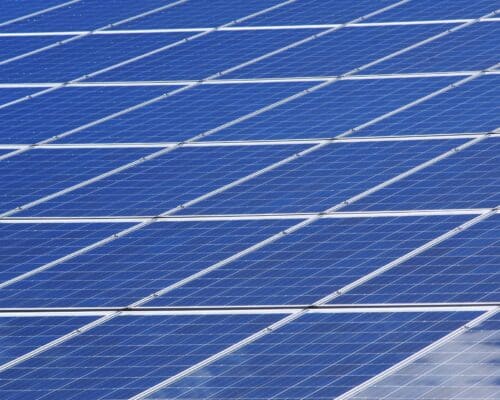Japan’s Carbon Capture Investments in Australia Pose Significant Financial Risk
Steve Tritton / Shutterstock.com
04 September 2023 – by Tim Daiss
Japan sees carbon capture and storage (CCUS) technology as promising. Its industry ministry, in January, set a target of an annual CO2 storage capacity of 6-12 million tonnes by 2030 under a long-term Japanese carbon capture roadmap.
The country’s carbon capture policy hinges on the belief that the technology can help it reach net zero by 2050 while giving it time to develop other energy sources.
Against this backdrop, Japan and Australia are strengthening their energy relationship. Meanwhile, natural resource-poor Japan imports around 43% of its liquefied natural gas (LNG), 60% of its iron ore and a massive 75% of its coal from energy-rich Australia.
Why Does Japan Have High CO2 Emissions?
Due to overreliance on fossil fuel usage for its power sector, Japan is the world’s sixth largest greenhouse (GHG) emitter after China, the US, the EU, India and Russia. This comes despite a population of only around 125 million people.
Australia, the world’s largest LNG producer, is a major GHG emitter. Even though its population is just over 25 million people, it remains the world’s 14th largest GHG emitter. Most of that comes from fossil fuel production.
Under domestic and international pressure, Japan and Australia are trying to reduce emissions and pivot to cleaner energy development. However, just how effective those methods will be is subject to intense debate.
Relying on Carbon Capture Technology
Both countries agree that carbon capture storage technology is the way forward to rein in GHG emissions.
They use the CCUS rationale to push continued fossil fuel usage and development. This includes producing what they both consider as “clean hydrogen”.
However, what they call clean hydrogen is merely blue hydrogen that is produced using natural gas and supported by CCUS technology.
Japanese Energy Giants Invest in Aussie CCUS
Inpex, Japan’s largest oil and gas exploration giant, recently announced that it would spearhead the construction of one of the world’s largest CCUS facilities. It will be located in Darwin in Australia’s Northern Territory.
Inpex said it would start injecting 2 million tonnes or more of CO2 per year from its Ichthys LNG project as a first step.
The proposed CCUS hub will cost around USD 868 million. Inpex claims it could eventually capture 7 million tonnes of CO2 per year. This would put it on par with the world’s largest carbon capture hub operated by super major ExxonMobil in the US.
Inpex is also part of the Bonaparte CCUS Assessment joint venture, which includes Aussie gas major Woodside Energy and French energy giant TotalEnergies. The group is appraising an alternative large-scale GHG storage site in the Petrel sub-basin.
Other carbon capture projects in Australia include Bayu Undan CCUS, which Perth-based gas producer Santos is developing. It will initially store CO2 from its offshore Barossa gas development.
Numerous other Japanese-Australian CCUS collaborations and a slew of feasibility studies of various sizes are being undertaken. This is due to the Australian government’s favourable treatment of carbon capture technology in its oil and gas sector.
The Financial Risk of CCUS
Japanese companies see CCUS as a viable climate mitigation tool for use up until mid-century. Yet, this is equivalent to oil sector greenwashing, which is designed to sustain existing fossil fuel projects and justify building new ones. Moreover, there’s a systemic risk that the companies seemingly ignore.
Since CCUS remains unproven at a large scale and takes too long to build, along with high development costs, investing in the technology is a risky financial endeavour.
CCUS development costs are projected to increase even more for several years before any cost savings occur, according to Wood Mackenzie CCUS analyst Mhairidh Evans.
As such, if these projects fail to achieve their stated objectives, Japanese companies investing in Australian carbon capture projects could end up with stranded assets. In the energy sector, a stranded asset is a project worth less than expected and incurs a financial loss. As such, they are eventually abandoned or stranded.
Insufficient verifiable data to demonstrate the effectiveness of the technology against stated claims is another key obstacle facing CCUS investment in Australia. Given the uncertainties around CCUS technology and the risks involved, the technology needs to evolve significantly and be technically proven to be commercially viable at scale and, consequently, “bankable”, an Institute for Financial Analysis and Energy Economics (IEEFA) study finds.
Controversial Gorgon
Chevron’s Gorgon project in Australia proves this point. At a cost of more than USD 1.9 billion, Gorgon (which includes the largest CCUS project in the world) has simply failed to deliver. It has underdelivered on its targets for the first five years of operation.
As a result, Gorgon agreed to buy and surrender credible GHG offsets recognised by the West Australian Government to offset its target shortfall of 5.23 million tonnes of CO2.
Though it’s estimated to cost up to USD 184 million to cover the shortfall, Chevron refuses to disclose the real cost.
Worse yet, the cost and project liability will likely be handed over to the government and, in turn, passed on to taxpayers.
Other failed projects with high-cost setbacks are starting to pile up. These include the failure of the Longannet CCUS project in the UK, the Kemper project and the Petra Nova CCUS project – both in the US.
Simply put, the numbers don’t add up, and the commercial realities for CCUS are anything but promising.
Coming Full Circle
Japanese companies also do not understand that renewable energy can decarbonise most electricity. Renewable energy development also comes with considerable savings over CCUS projects.
The levelised cost of electricity (LCOE) for fossil fuels paired with CCUS is at least 1.5 to 2 times higher than solar, wind or traditional coal and gas power plants without CCUS. Other reports estimate that the LCOE level is even higher.
A One Earth report finds that cost reductions in wind and solar reduce the value of CCUS by 15–96%, while renewables directly compete with CCUS in electricity and hydrogen production. It also found that using low discount rates reduces the value of CCUS by up to two-thirds.
by Tim Daiss
Tim has been working in energy markets in the Asia-Pacific region for more than ten years. He was trained as an LNG and oil markets analyst and writer then switched to working in sustainable energy, including solar and wind power project financing and due diligence. He’s performed regulatory, geopolitical and market due diligence for energy projects in Vietnam, Thailand and Indonesia. He’s also worked as a consultant/advisor for US, UK and Singapore-based energy consultancies including Wood Mackenzie, Enerdata, S&P Global, KBR, Critical Resource, and others. He is the Chief Marketing Officer (CMO) for US-based lithium-sulfur EV battery start-up Bemp Research Corp.
Read more




